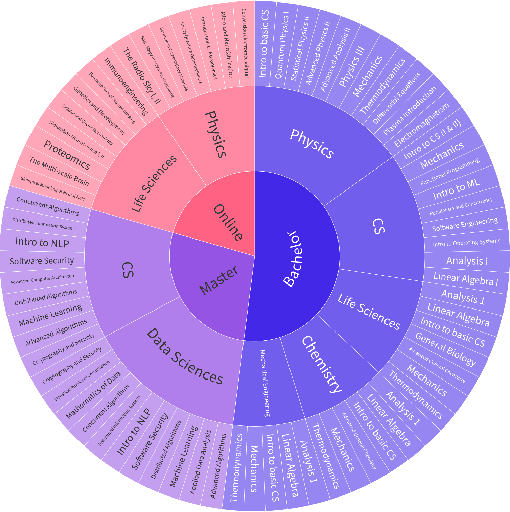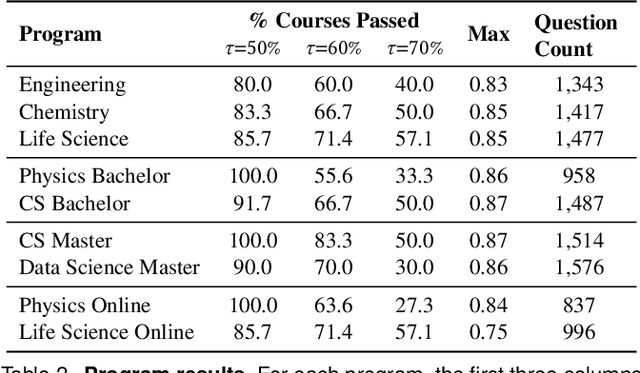Alexander Mathis
Arnold: a generalist muscle transformer policy
Aug 25, 2025Abstract:Controlling high-dimensional and nonlinear musculoskeletal models of the human body is a foundational scientific challenge. Recent machine learning breakthroughs have heralded policies that master individual skills like reaching, object manipulation and locomotion in musculoskeletal systems with many degrees of freedom. However, these agents are merely "specialists", achieving high performance for a single skill. In this work, we develop Arnold, a generalist policy that masters multiple tasks and embodiments. Arnold combines behavior cloning and fine-tuning with PPO to achieve expert or super-expert performance in 14 challenging control tasks from dexterous object manipulation to locomotion. A key innovation is Arnold's sensorimotor vocabulary, a compositional representation of the semantics of heterogeneous sensory modalities, objectives, and actuators. Arnold leverages this vocabulary via a transformer architecture to deal with the variable observation and action spaces of each task. This framework supports efficient multi-task, multi-embodiment learning and facilitates rapid adaptation to novel tasks. Finally, we analyze Arnold to provide insights into biological motor control, corroborating recent findings on the limited transferability of muscle synergies across tasks.
LLaVAction: evaluating and training multi-modal large language models for action recognition
Mar 24, 2025Abstract:Understanding human behavior requires measuring behavioral actions. Due to its complexity, behavior is best mapped onto a rich, semantic structure such as language. The recent development of multi-modal large language models (MLLMs) is a promising candidate for a wide range of action understanding tasks. In this work, we focus on evaluating and then improving MLLMs to perform action recognition. We reformulate EPIC-KITCHENS-100, one of the largest and most challenging egocentric action datasets, to the form of video multiple question answering (EPIC-KITCHENS-100-MQA). We show that when we sample difficult incorrect answers as distractors, leading MLLMs struggle to recognize the correct actions. We propose a series of methods that greatly improve the MLLMs' ability to perform action recognition, achieving state-of-the-art on both the EPIC-KITCHENS-100 validation set, as well as outperforming GPT-4o by 21 points in accuracy on EPIC-KITCHENS-100-MQA. Lastly, we show improvements on other action-related video benchmarks such as EgoSchema, PerceptionTest, LongVideoBench, VideoMME and MVBench, suggesting that MLLMs are a promising path forward for complex action tasks. Code and models are available at: https://github.com/AdaptiveMotorControlLab/LLaVAction.
Reinforcement learning-based motion imitation for physiologically plausible musculoskeletal motor control
Mar 18, 2025Abstract:How do humans move? The quest to understand human motion has broad applications in numerous fields, ranging from computer animation and motion synthesis to neuroscience, human prosthetics and rehabilitation. Although advances in reinforcement learning (RL) have produced impressive results in capturing human motion using simplified humanoids, controlling physiologically accurate models of the body remains an open challenge. In this work, we present a model-free motion imitation framework (KINESIS) to advance the understanding of muscle-based motor control. Using a musculoskeletal model of the lower body with 80 muscle actuators and 20 DoF, we demonstrate that KINESIS achieves strong imitation performance on 1.9 hours of motion capture data, is controllable by natural language through pre-trained text-to-motion generative models, and can be fine-tuned to carry out high-level tasks such as target goal reaching. Importantly, KINESIS generates muscle activity patterns that correlate well with human EMG activity. The physiological plausibility makes KINESIS a promising model for tackling challenging problems in human motor control theory, which we highlight by investigating Bernstein's redundancy problem in the context of locomotion. Code, videos and benchmarks will be available at https://github.com/amathislab/Kinesis.
PICLe: Pseudo-Annotations for In-Context Learning in Low-Resource Named Entity Detection
Dec 16, 2024Abstract:In-context learning (ICL) enables Large Language Models (LLMs) to perform tasks using few demonstrations, facilitating task adaptation when labeled examples are hard to obtain. However, ICL is sensitive to the choice of demonstrations, and it remains unclear which demonstration attributes enable in-context generalization. In this work, we conduct a perturbation study of in-context demonstrations for low-resource Named Entity Detection (NED). Our surprising finding is that in-context demonstrations with partially correct annotated entity mentions can be as effective for task transfer as fully correct demonstrations. Based off our findings, we propose Pseudo-annotated In-Context Learning (PICLe), a framework for in-context learning with noisy, pseudo-annotated demonstrations. PICLe leverages LLMs to annotate many demonstrations in a zero-shot first pass. We then cluster these synthetic demonstrations, sample specific sets of in-context demonstrations from each cluster, and predict entity mentions using each set independently. Finally, we use self-verification to select the final set of entity mentions. We evaluate PICLe on five biomedical NED datasets and show that, with zero human annotation, PICLe outperforms ICL in low-resource settings where limited gold examples can be used as in-context demonstrations.
Could ChatGPT get an Engineering Degree? Evaluating Higher Education Vulnerability to AI Assistants
Aug 07, 2024



Abstract:AI assistants are being increasingly used by students enrolled in higher education institutions. While these tools provide opportunities for improved teaching and education, they also pose significant challenges for assessment and learning outcomes. We conceptualize these challenges through the lens of vulnerability, the potential for university assessments and learning outcomes to be impacted by student use of generative AI. We investigate the potential scale of this vulnerability by measuring the degree to which AI assistants can complete assessment questions in standard university-level STEM courses. Specifically, we compile a novel dataset of textual assessment questions from 50 courses at EPFL and evaluate whether two AI assistants, GPT-3.5 and GPT-4 can adequately answer these questions. We use eight prompting strategies to produce responses and find that GPT-4 answers an average of 65.8% of questions correctly, and can even produce the correct answer across at least one prompting strategy for 85.1% of questions. When grouping courses in our dataset by degree program, these systems already pass non-project assessments of large numbers of core courses in various degree programs, posing risks to higher education accreditation that will be amplified as these models improve. Our results call for revising program-level assessment design in higher education in light of advances in generative AI.
HOISDF: Constraining 3D Hand-Object Pose Estimation with Global Signed Distance Fields
Feb 26, 2024



Abstract:Human hands are highly articulated and versatile at handling objects. Jointly estimating the 3D poses of a hand and the object it manipulates from a monocular camera is challenging due to frequent occlusions. Thus, existing methods often rely on intermediate 3D shape representations to increase performance. These representations are typically explicit, such as 3D point clouds or meshes, and thus provide information in the direct surroundings of the intermediate hand pose estimate. To address this, we introduce HOISDF, a Signed Distance Field (SDF) guided hand-object pose estimation network, which jointly exploits hand and object SDFs to provide a global, implicit representation over the complete reconstruction volume. Specifically, the role of the SDFs is threefold: equip the visual encoder with implicit shape information, help to encode hand-object interactions, and guide the hand and object pose regression via SDF-based sampling and by augmenting the feature representations. We show that HOISDF achieves state-of-the-art results on hand-object pose estimation benchmarks (DexYCB and HO3Dv2). Code is available at https://github.com/amathislab/HOISDF
ODEFormer: Symbolic Regression of Dynamical Systems with Transformers
Oct 09, 2023Abstract:We introduce ODEFormer, the first transformer able to infer multidimensional ordinary differential equation (ODE) systems in symbolic form from the observation of a single solution trajectory. We perform extensive evaluations on two datasets: (i) the existing "Strogatz" dataset featuring two-dimensional systems; (ii) ODEBench, a collection of one- to four-dimensional systems that we carefully curated from the literature to provide a more holistic benchmark. ODEFormer consistently outperforms existing methods while displaying substantially improved robustness to noisy and irregularly sampled observations, as well as faster inference. We release our code, model and benchmark dataset publicly.
AmadeusGPT: a natural language interface for interactive animal behavioral analysis
Jul 10, 2023Abstract:The process of quantifying and analyzing animal behavior involves translating the naturally occurring descriptive language of their actions into machine-readable code. Yet, codifying behavior analysis is often challenging without deep understanding of animal behavior and technical machine learning knowledge. To limit this gap, we introduce AmadeusGPT: a natural language interface that turns natural language descriptions of behaviors into machine-executable code. Large-language models (LLMs) such as GPT3.5 and GPT4 allow for interactive language-based queries that are potentially well suited for making interactive behavior analysis. However, the comprehension capability of these LLMs is limited by the context window size, which prevents it from remembering distant conversations. To overcome the context window limitation, we implement a novel dual-memory mechanism to allow communication between short-term and long-term memory using symbols as context pointers for retrieval and saving. Concretely, users directly use language-based definitions of behavior and our augmented GPT develops code based on the core AmadeusGPT API, which contains machine learning, computer vision, spatio-temporal reasoning, and visualization modules. Users then can interactively refine results, and seamlessly add new behavioral modules as needed. We benchmark AmadeusGPT and show we can produce state-of-the-art performance on the MABE 2022 behavior challenge tasks. Note, an end-user would not need to write any code to achieve this. Thus, collectively AmadeusGPT presents a novel way to merge deep biological knowledge, large-language models, and core computer vision modules into a more naturally intelligent system. Code and demos can be found at: https://github.com/AdaptiveMotorControlLab/AmadeusGPT.
Rethinking pose estimation in crowds: overcoming the detection information-bottleneck and ambiguity
Jun 13, 2023



Abstract:Frequent interactions between individuals are a fundamental challenge for pose estimation algorithms. Current pipelines either use an object detector together with a pose estimator (top-down approach), or localize all body parts first and then link them to predict the pose of individuals (bottom-up). Yet, when individuals closely interact, top-down methods are ill-defined due to overlapping individuals, and bottom-up methods often falsely infer connections to distant body parts. Thus, we propose a novel pipeline called bottom-up conditioned top-down pose estimation (BUCTD) that combines the strengths of bottom-up and top-down methods. Specifically, we propose to use a bottom-up model as the detector, which in addition to an estimated bounding box provides a pose proposal that is fed as condition to an attention-based top-down model. We demonstrate the performance and efficiency of our approach on animal and human pose estimation benchmarks. On CrowdPose and OCHuman, we outperform previous state-of-the-art models by a significant margin. We achieve 78.5 AP on CrowdPose and 47.2 AP on OCHuman, an improvement of 8.6% and 4.9% over the prior art, respectively. Furthermore, we show that our method has excellent performance on non-crowded datasets such as COCO, and strongly improves the performance on multi-animal benchmarks involving mice, fish and monkeys.
Latent Exploration for Reinforcement Learning
May 31, 2023Abstract:In Reinforcement Learning, agents learn policies by exploring and interacting with the environment. Due to the curse of dimensionality, learning policies that map high-dimensional sensory input to motor output is particularly challenging. During training, state of the art methods (SAC, PPO, etc.) explore the environment by perturbing the actuation with independent Gaussian noise. While this unstructured exploration has proven successful in numerous tasks, it ought to be suboptimal for overactuated systems. When multiple actuators, such as motors or muscles, drive behavior, uncorrelated perturbations risk diminishing each other's effect, or modifying the behavior in a task-irrelevant way. While solutions to introduce time correlation across action perturbations exist, introducing correlation across actuators has been largely ignored. Here, we propose LATent TIme-Correlated Exploration (Lattice), a method to inject temporally-correlated noise into the latent state of the policy network, which can be seamlessly integrated with on- and off-policy algorithms. We demonstrate that the noisy actions generated by perturbing the network's activations can be modeled as a multivariate Gaussian distribution with a full covariance matrix. In the PyBullet locomotion tasks, Lattice-SAC achieves state of the art results, and reaches 18% higher reward than unstructured exploration in the Humanoid environment. In the musculoskeletal control environments of MyoSuite, Lattice-PPO achieves higher reward in most reaching and object manipulation tasks, while also finding more energy-efficient policies with reductions of 20-60%. Overall, we demonstrate the effectiveness of structured action noise in time and actuator space for complex motor control tasks.
 Add to Chrome
Add to Chrome Add to Firefox
Add to Firefox Add to Edge
Add to Edge